A while ago I openly mused that I should get a fishing license. Julia (my food-frakking deputy) who we have determined does indeed pay attention, subsequently bought me a Texas fishing license and a pole.
My first fishing expedition was this week. I was crossing Lady Bird Lake anyways, so I threw the line in. Results were consistent with the fishing I did as a kid. Most fish ignore attempts to hook them, with the exception of bluegills, which strike the bait the moment it hits the water. And yet, nine times out of ten, the bluegill will strip the worm clean off the hook without a single notch on their lip. The tenth time, the fish you catch is so tiny as to make a fillet cut impossible.
Thankfully, my food frakking experience has lent me the skills to eat a fish in its entirety without stooping to cutting a boneless fillet. This food-frakker will show you how to clean, cook, and eat a very small bluegill fish.
This is the fish which had the misfortune to be the food frakker’s first experiment in wild-caught pan frying.
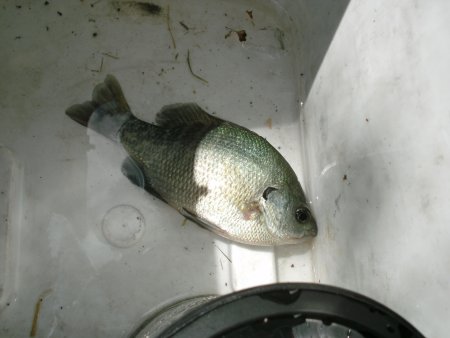
It’s curious that so many people tell me they would never eat fish out of Lady Bird Lake (the reservoir in the Colorado River that bisects Austin). I wonder if they know that the water coming out of their taps is the same water the fish lives in? Either way, I don’t see myself not eating fish I’ve caught. And the eating process begins with a 78-cent de-scaler.
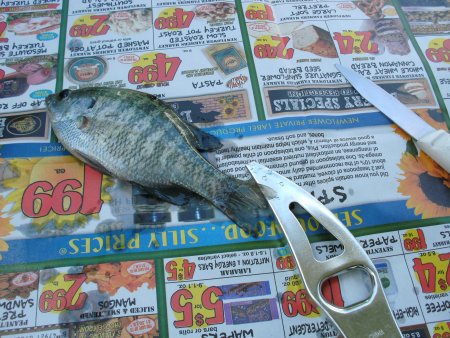
I was at my friend Peter Gabriel’s house, and the only knife he had was a ludicrously dull and notched paring knife. But it was sufficient for gutting.
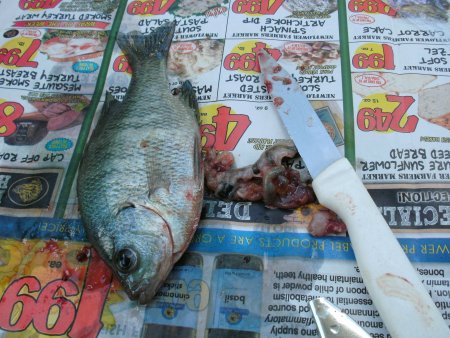
(A curious part of the Texas fishing code says that it is a violation to "fail to immediately remove the intestines from tilapia, grass carp, or any other fish listed as harmful". Which makes one wonder, why is it wrong to kill the fish some other way? You can’t just stab it, or cut off its head, you have to disembowel it?)
So the guts are all cleaned out, all the scales have been scraped off, and the fish has been rinsed. Then I cut slanted slashes in each side.
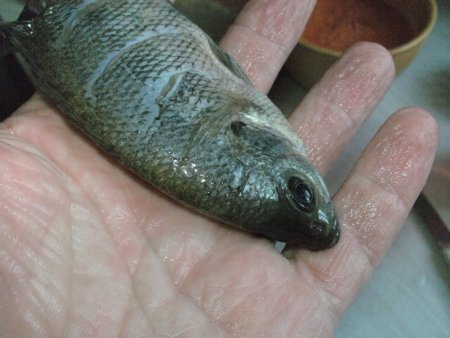
At this point I would rub spices into the slashes: sea salt, pepper, ginger, soy sauce, garlic. You know, tasty stuff.
The next step is breading. You can just toss it in rice flour, or you can do the whole three-step dip: flour, egg, then breadcrumbs or batter. Toss the breaded fish on a pre-heated pan with a coating of oil.
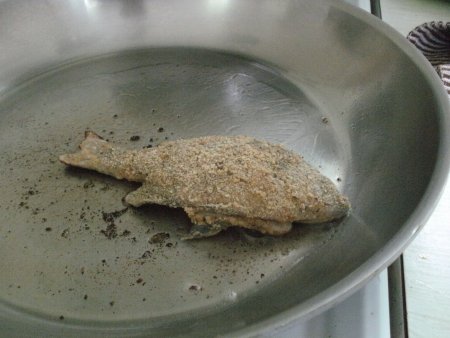
Notice how the slashes separate as it cooks.
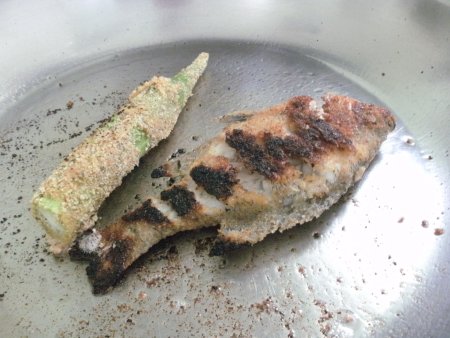
Because it’s that kind of operation, we also threw in the one vegetable we had on hand.
When it’s cooked through you just pick the flesh off with a fork.
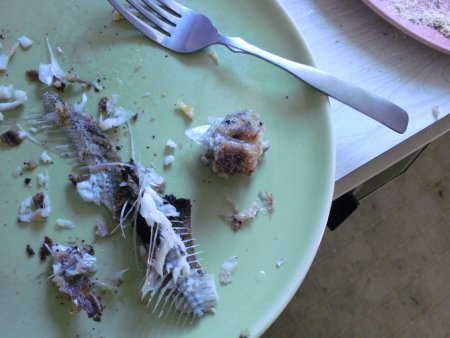
There’s not much doubt that fish just tastes better when you catch and kill it yourself.